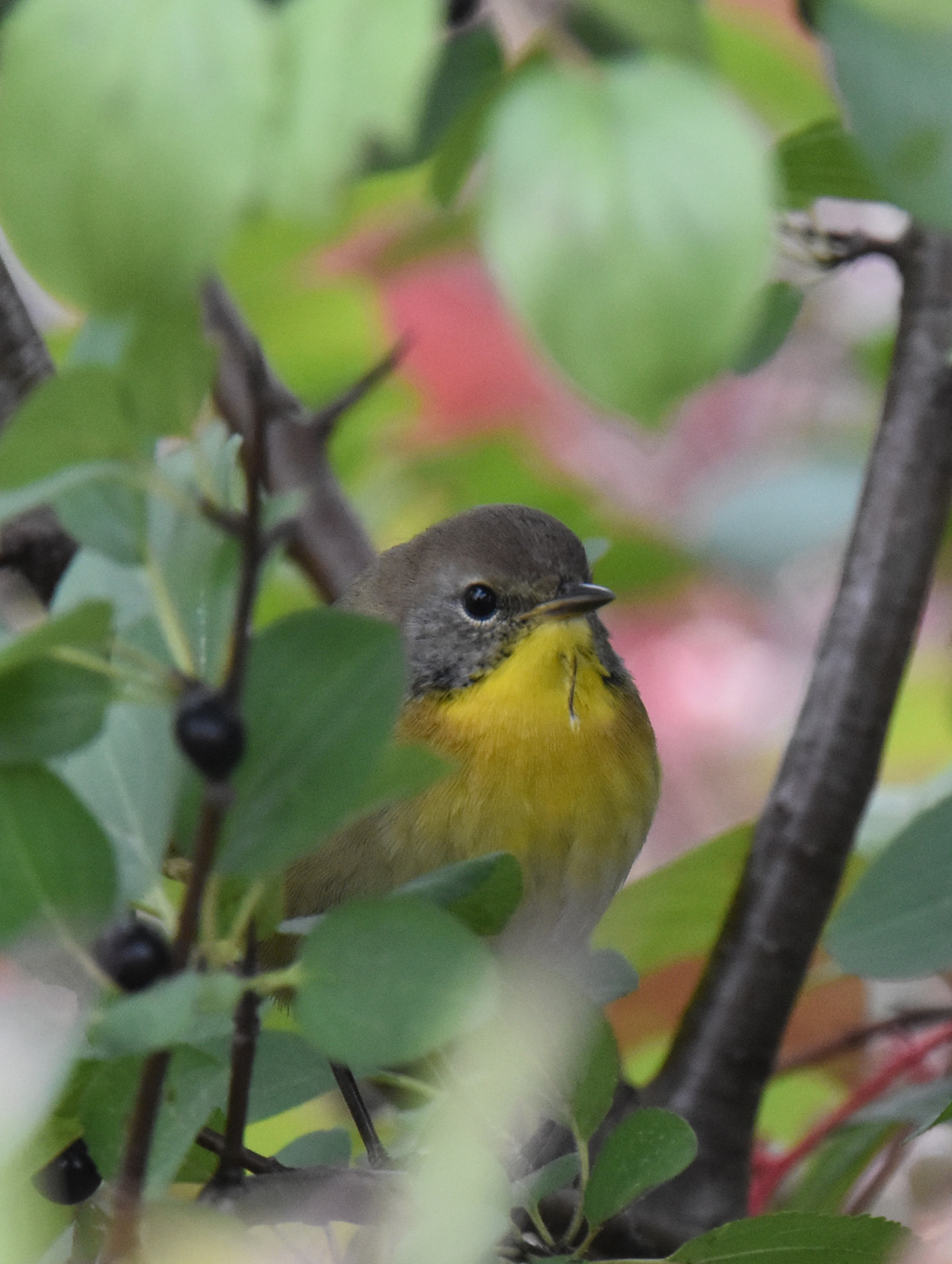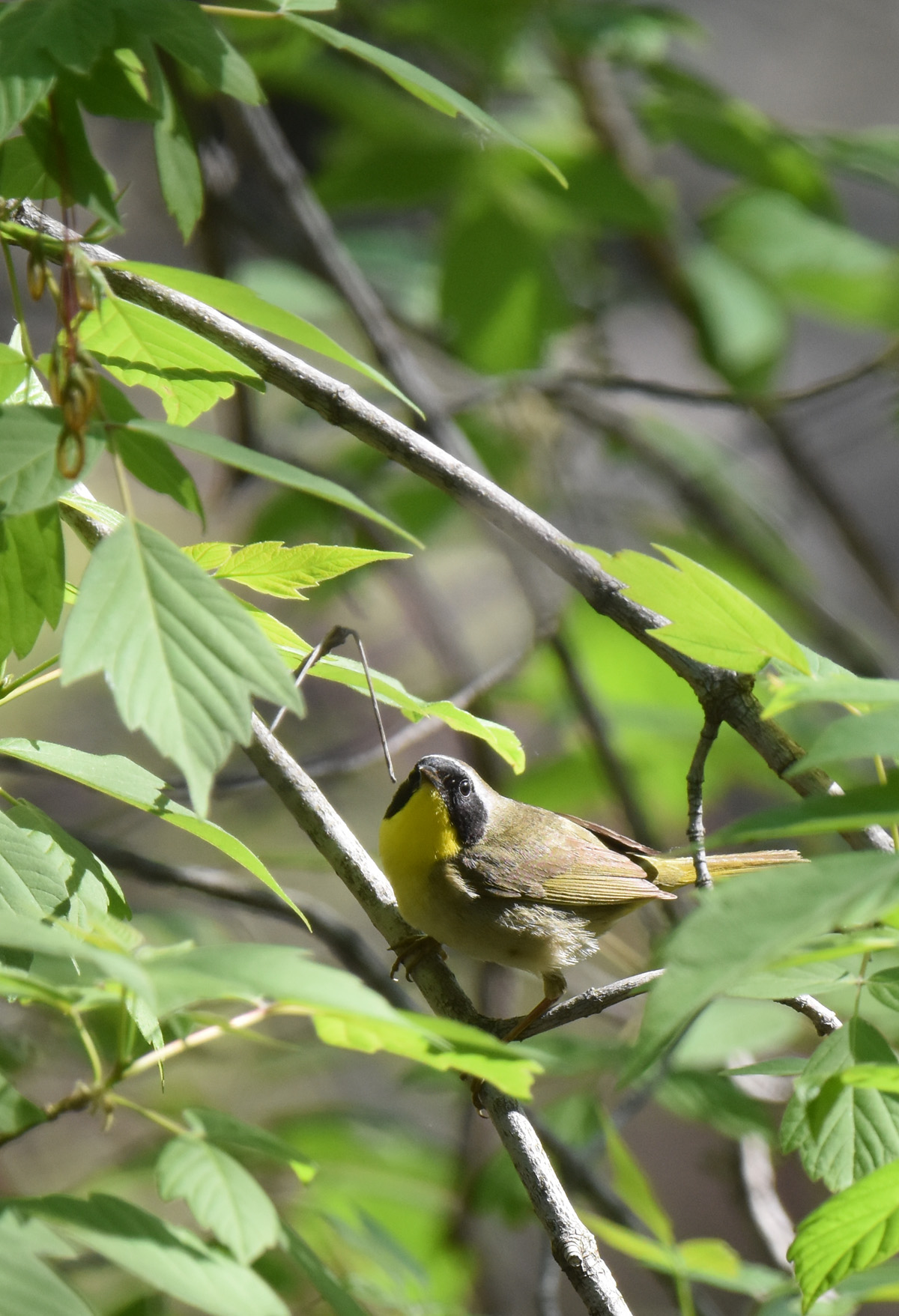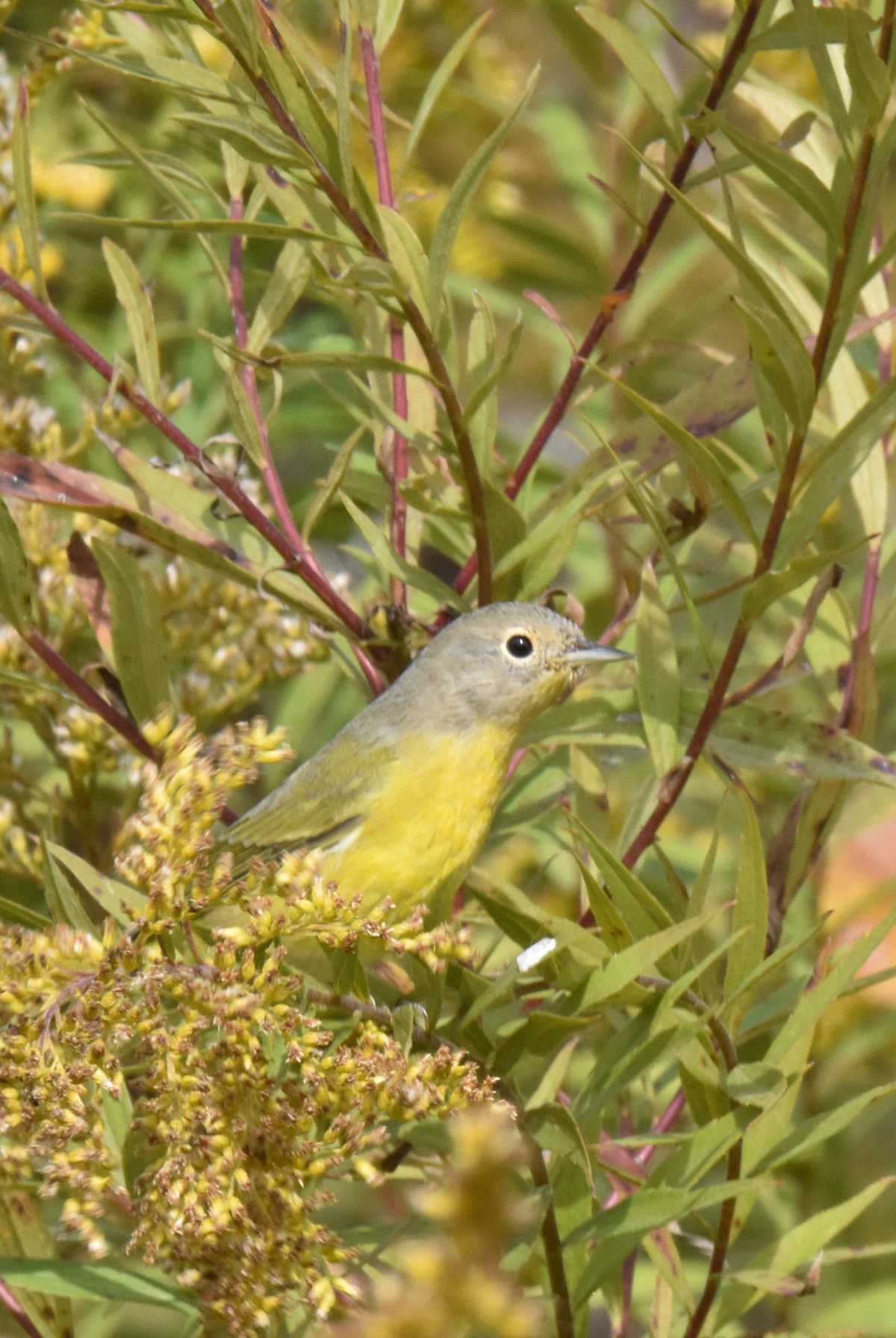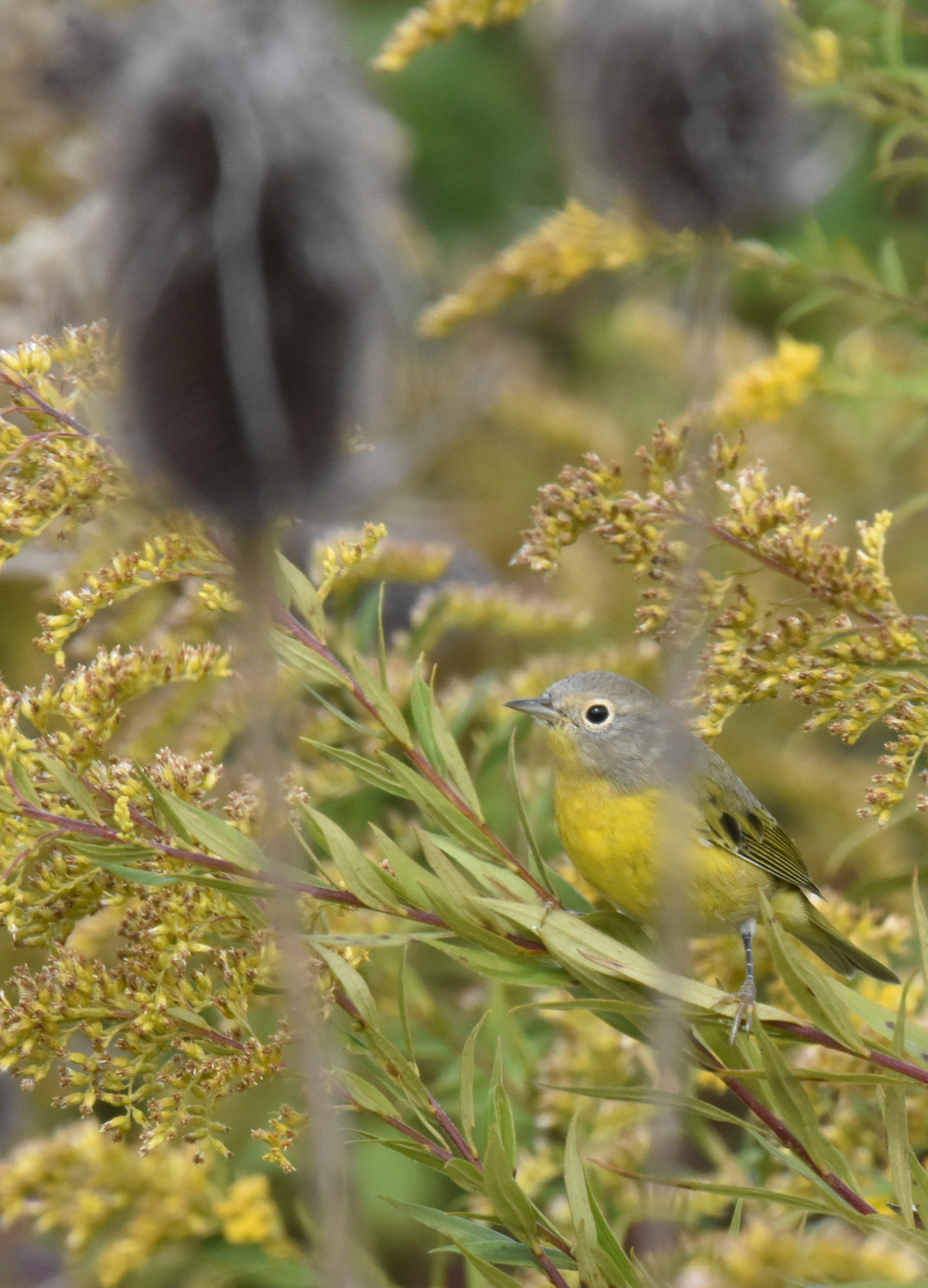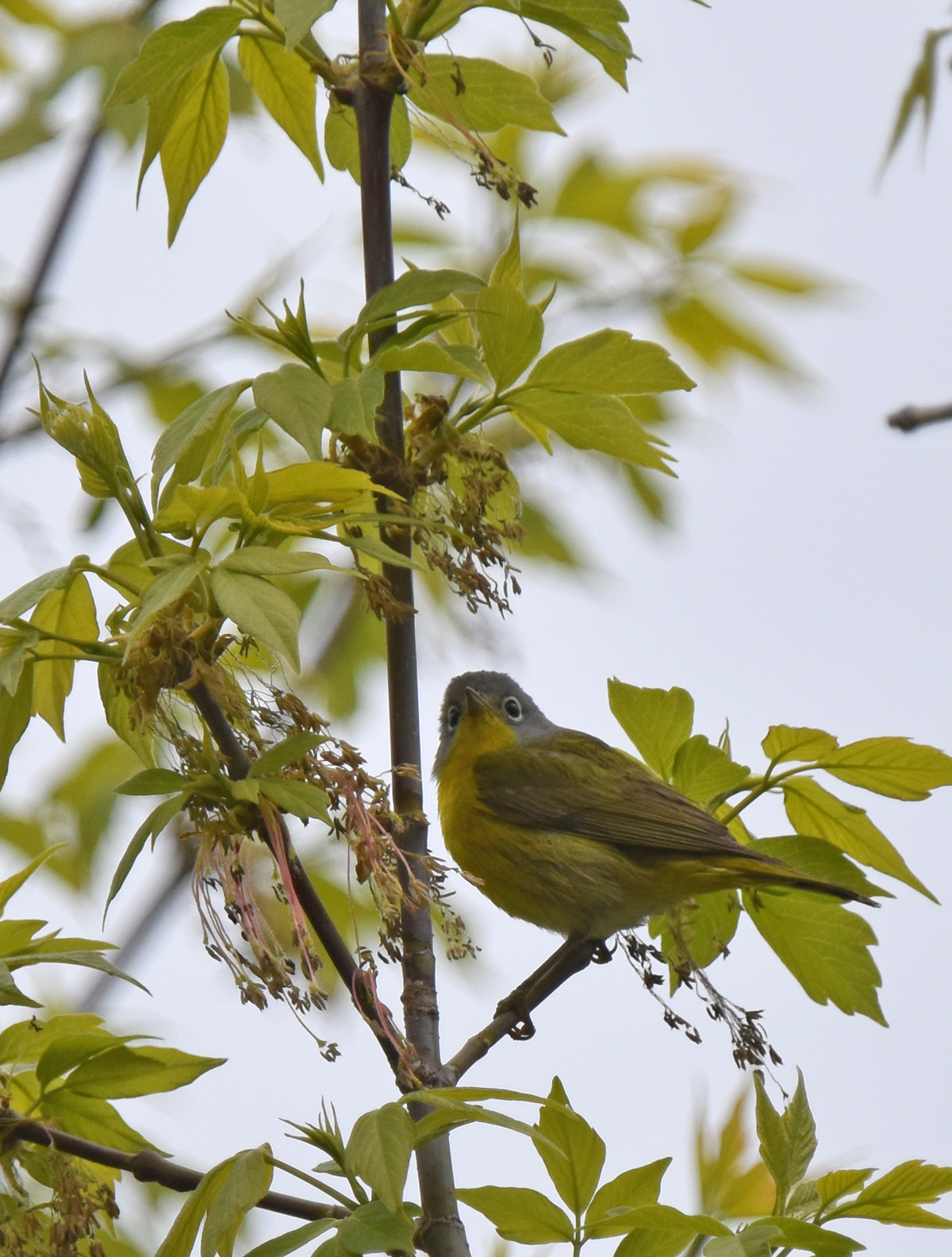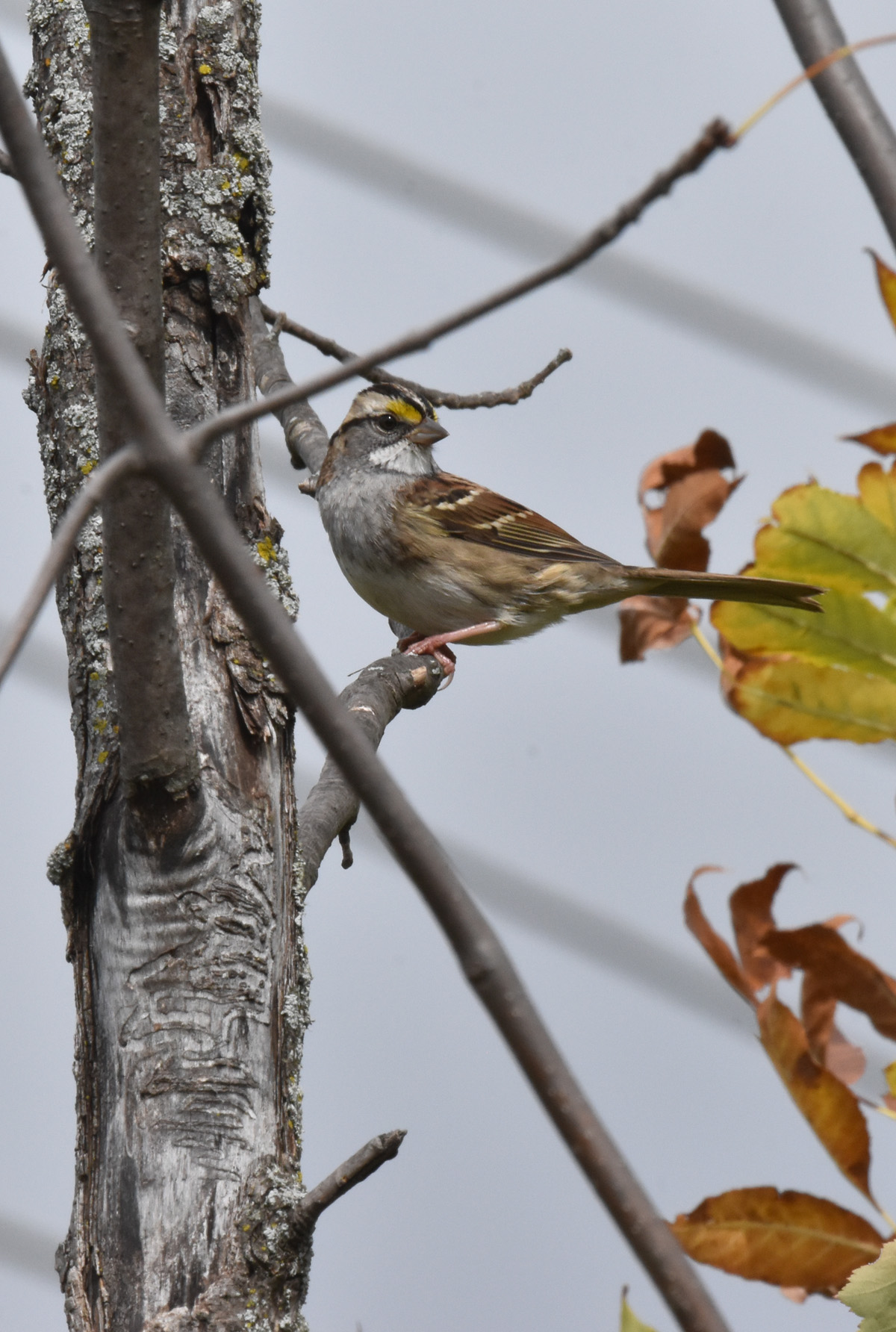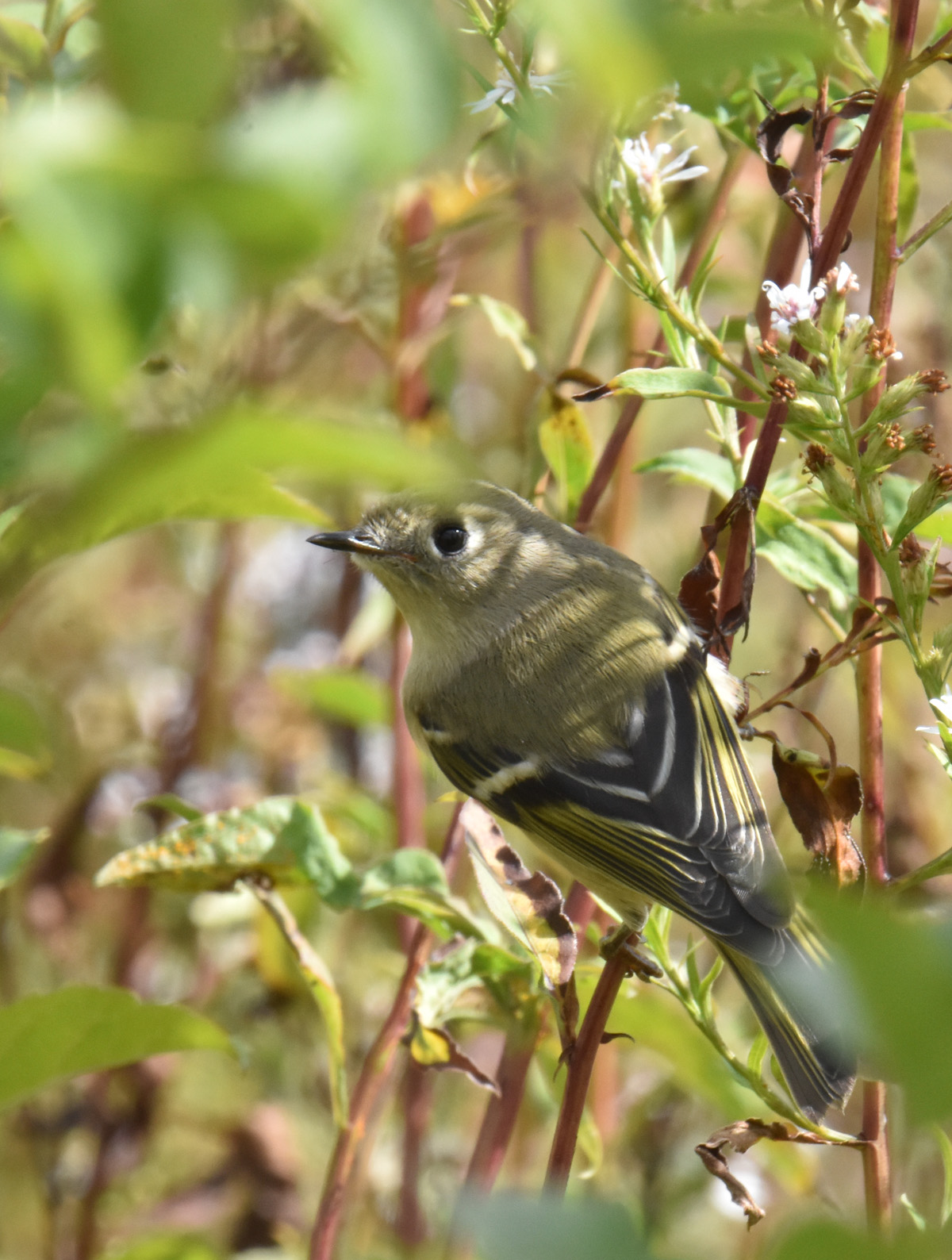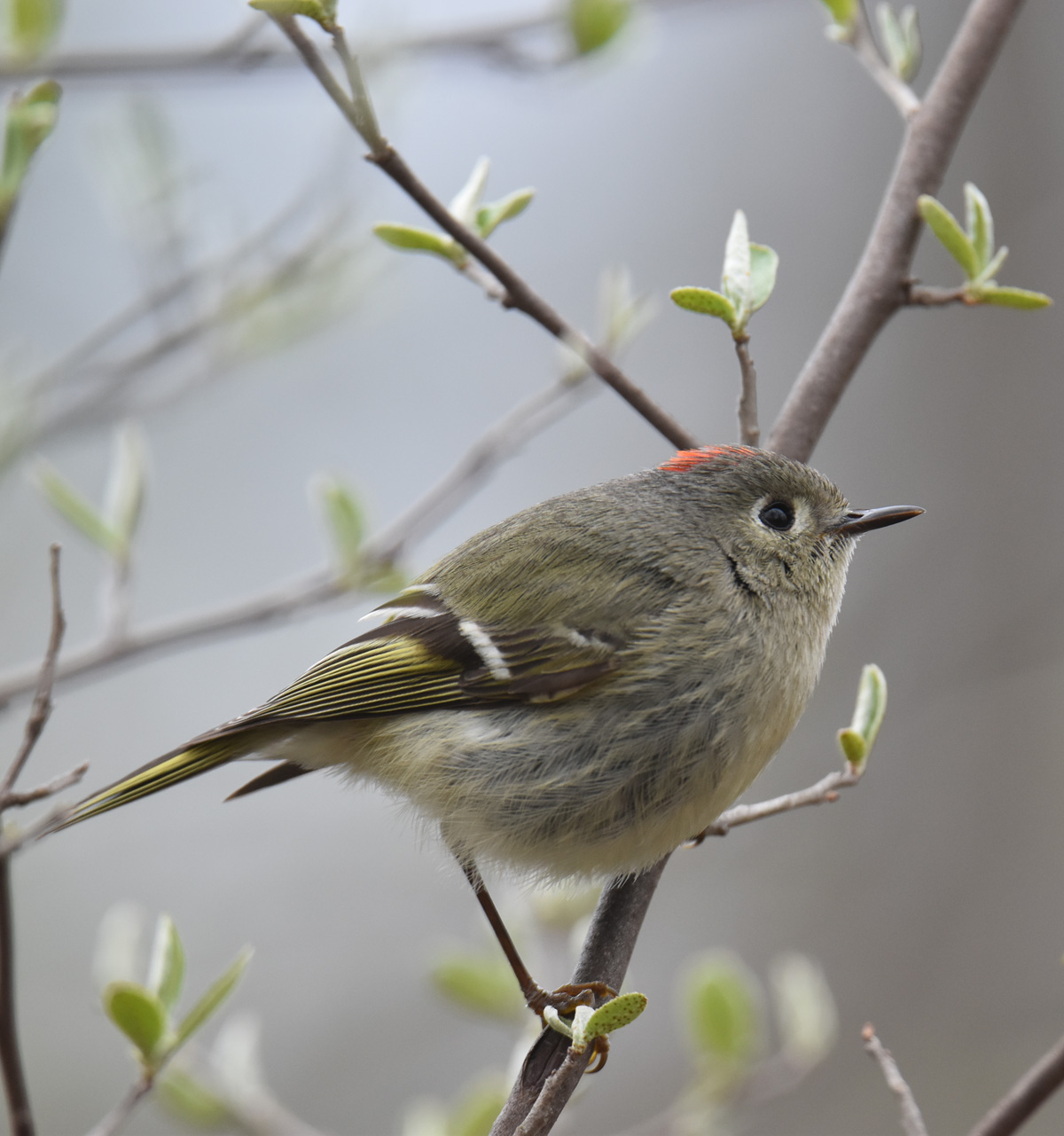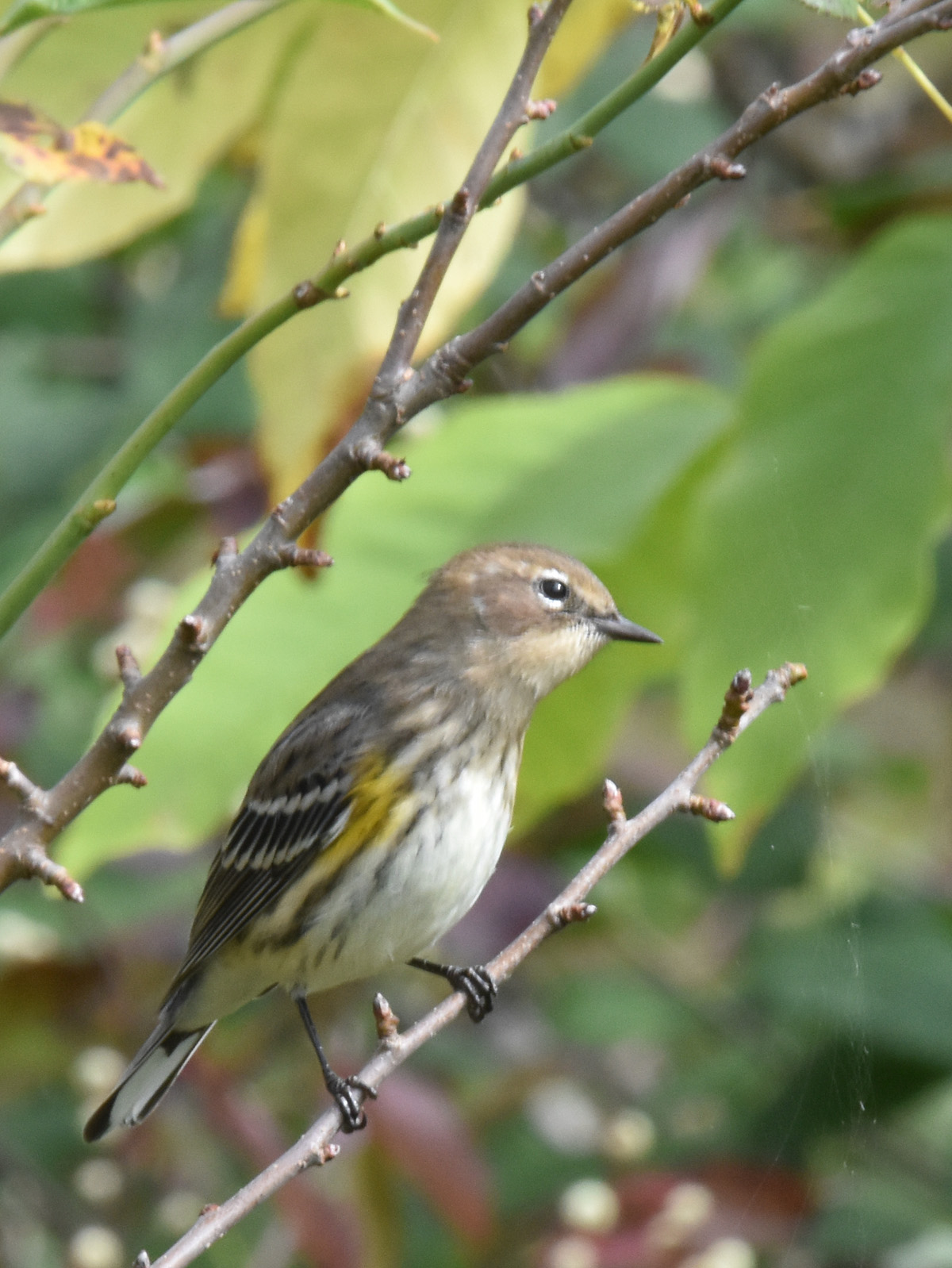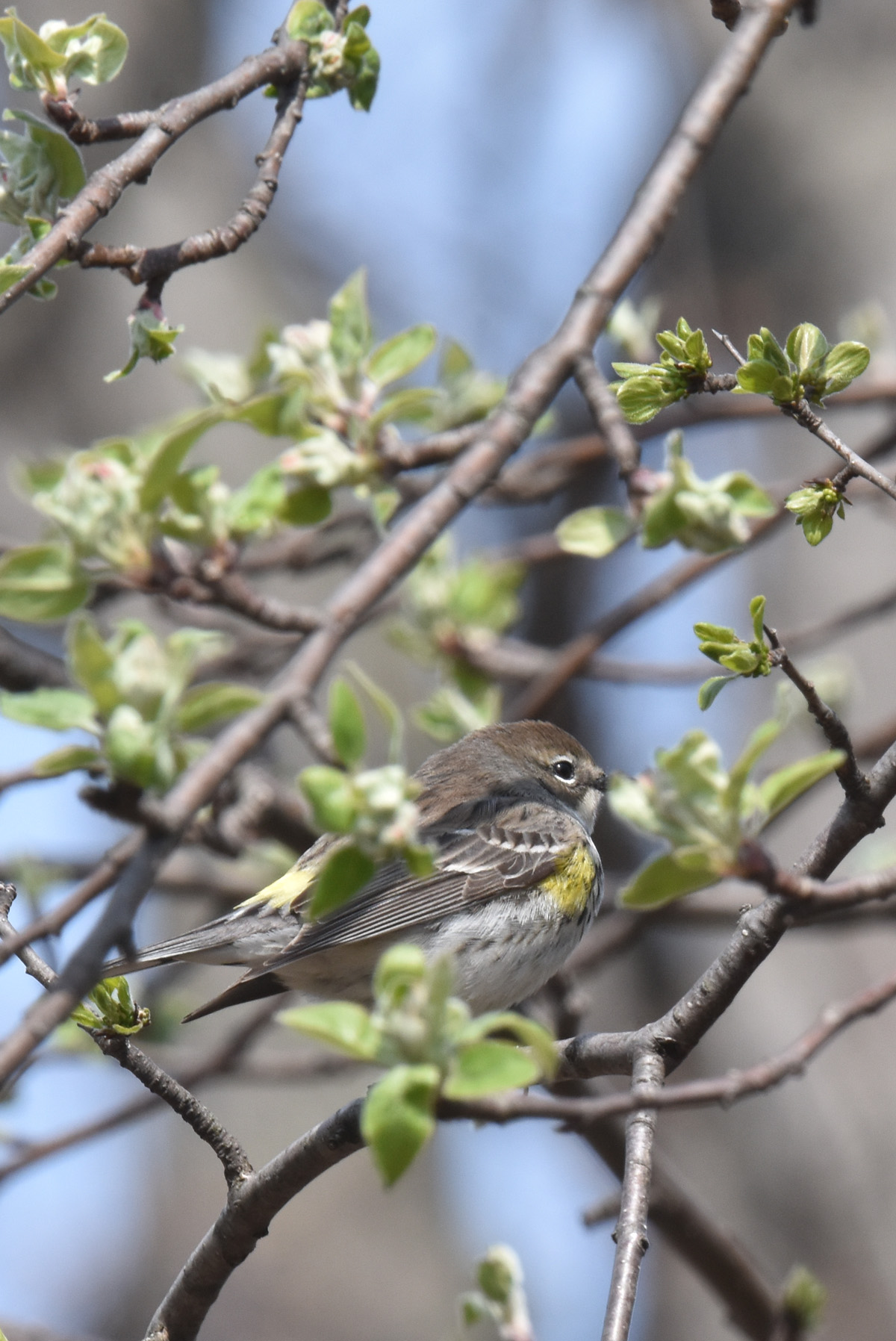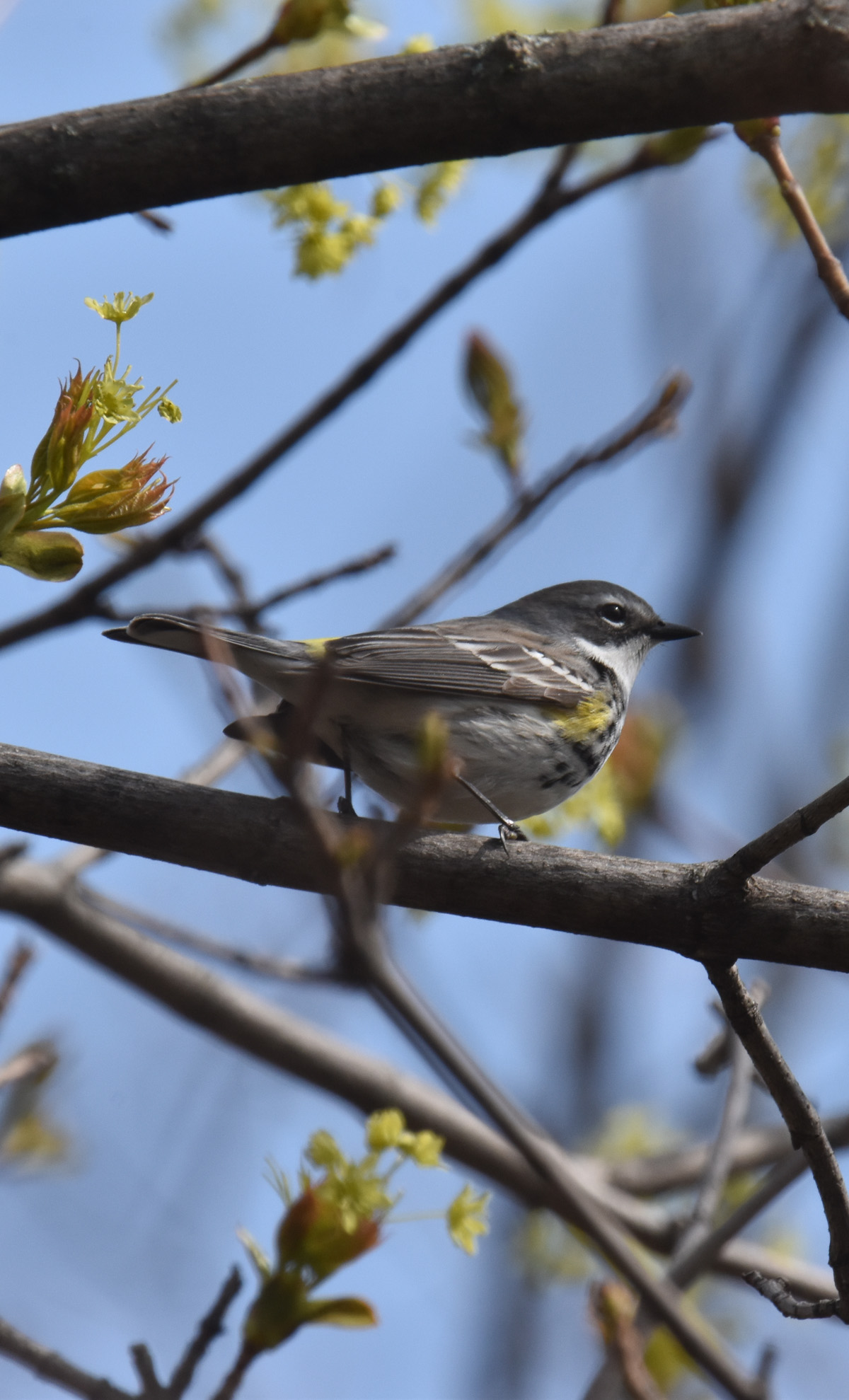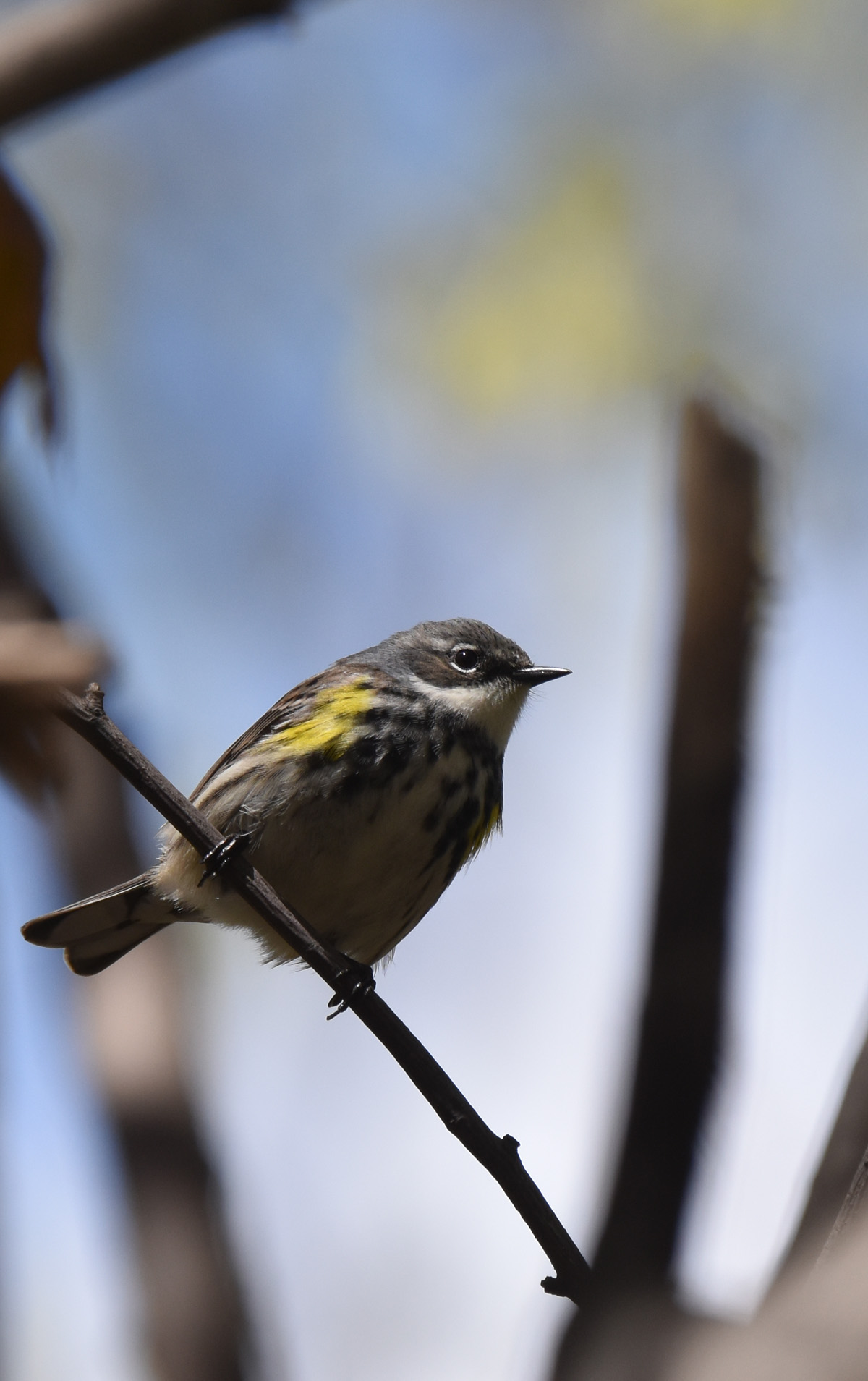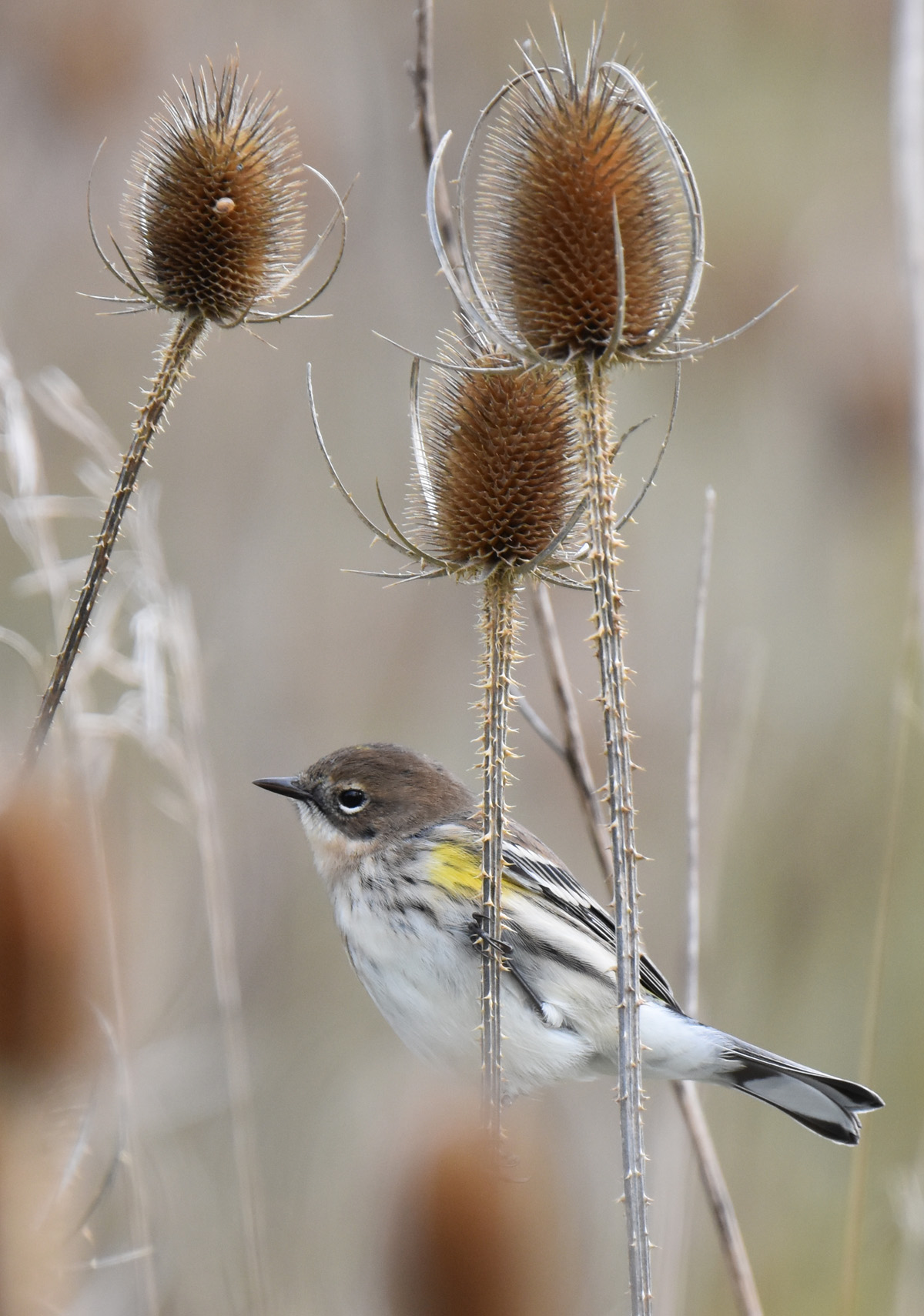I’ve stopped taking it for granted that each spring I will be out at the edge of the woods and creeks feeling that jolt of adrenaline and joy as a fast-flitting warbler snaps into sharp focus just as my finger triggers my camera. Instead, each day I am out, marvelling and discovering, I am thankful. This fall, I have been trying to catch images of oblivious birds as they rapidly hunt their way through the meadows, thickets and wood lots near my home. As I watched the silent Yellow-rumped Warblers speeding their way south, I thought back to just a few months ago when I met them bursting into song on their way north. So today I decided to pair some photos of the same species of birds as they moved by me in the spring and fall.
Common Yellowthroat Warblers Skulk In the Thickets
Common Yellowthroat warblers (not to be confused with uncommon Yellow-throated Warblers) nest in Mississauga. They also move through in spring and fall, migrating on to other thickets and shrubby wetland borders. I often can hear and catch glimpses of them without being able to get a photo of more than a patch of wing or a glimpse of bill.
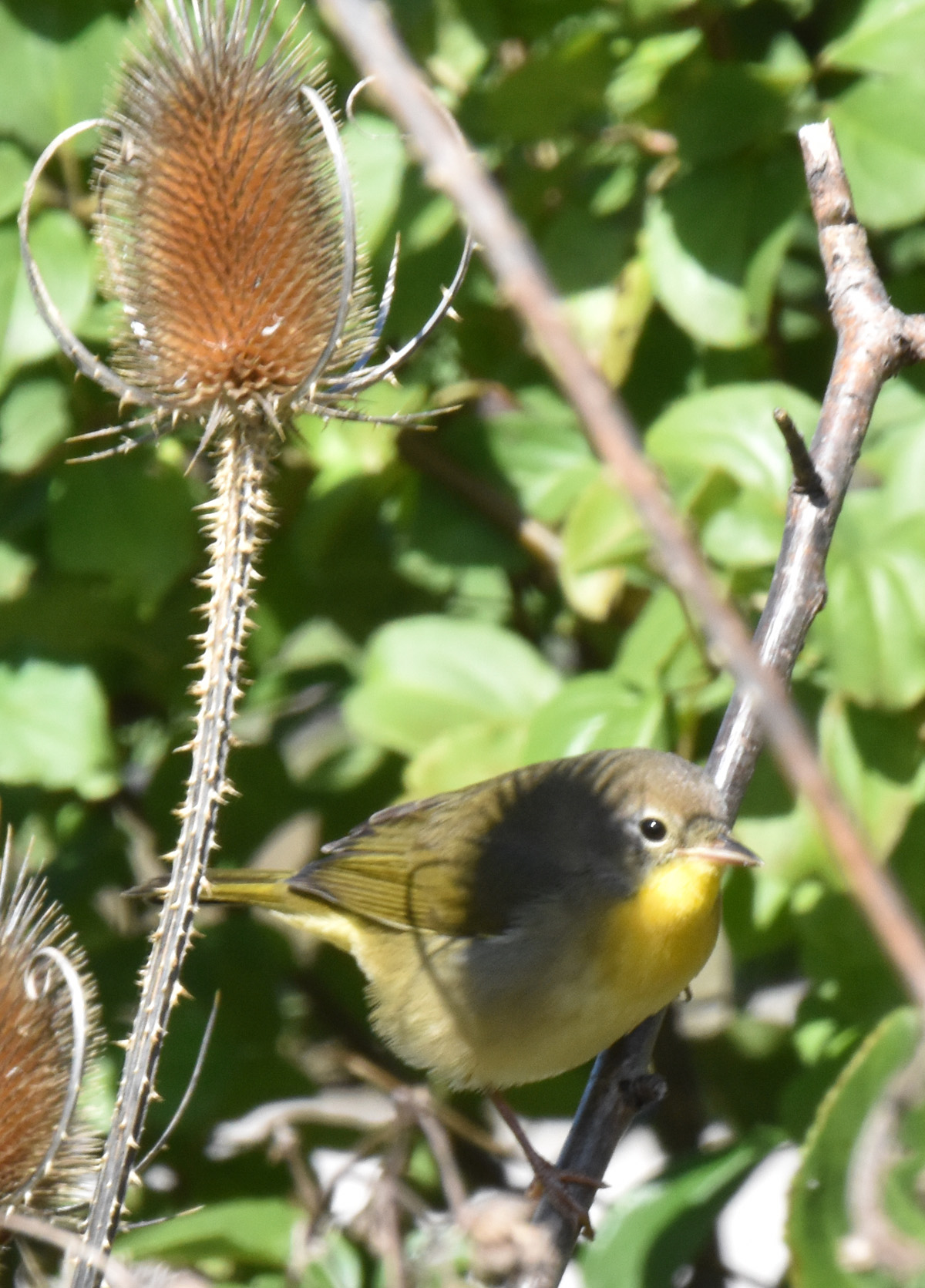
This fall Common Yellowthroat muttered constantly as it searched through the Dogwood, Buckthorn and Teasel bordering my trail.
This fall Yellowthroat looks likely to be a male, as there are some black feathers under the eyes.
This is a spring male Common Yellowthroat hunting busily among the fresh new leaves.
Is It Fair to Have a Nashville Warbler and a Tennessee Warbler?
I always have to double check mentally when naming Nashville and Tennesee Warblers. They don’t look or act in any way similarly but I still trip over the names.
One thing I do remember is that Nashville Warblers love hunting through the fall goldenrod. So I keep an eye out for tugging, bouncing goldenrod flowers. And sure enough…
…I find the bird responsible when it pauses to take a quick look around.
Nashville Warblers are quite brightly yellow and have a vivid white eye ring but they blend in surprisingly well with Goldenrod.
And with newly unfurled yellow-green leaves. This was a Nashville I watched in the nearby woodlot this spring.
Not Only Warblers Migrate So Do Some Sparrows
Sparrows are so common, especially House Sparrows, that many people don’t give them a second glance. The bold behaviour of White-throated Sparrows with their vivid yellow “eye brow” sometimes catches their notice though.
This fall White-throated Sparrow looks crisp and bright. I often see a flock of these working through the woods or meadows. When one gets alarmed, it will pop up high to check things out. And if it’s time to move on, they often will fly, single file, one after the other from one side of a path or road to the other. It makes it much easier to count them!
This spring White-throated Sparrow isn’t quite as bright but was singing the “O sweet Canada Canada” that many people have heard in the back ground of nature shows.
OK, Yes, Kinglets Are One of My Favourites in Spring or Fall
Ruby-crowned Kinglets, and Golden-crowned Kinglets, don’t waste time when they are hungry. Getting a focus fast-enough is more a matter of luck than skill in my case.
This fall Ruby-crowned Kinglet was working through the asters and goldenrod.
And this spring Ruby-crowned Kinglet was making sure another knew who was boss, so its Ruby is still showing a bit here as it calms down again.
It’s the spunky personality of Kinglets that makes them so fun. They are not at all afraid of people and they will continue gnabbing gnats within arm’s reach of me. Often I just stop and watch them rather than try to back away to get a photo with my long lens.
Yellow-rumped Warblers May Over-winter After the Flood of Migrants Move Through
Yellow-rumped Warblers can be found in small numbers in southern Ontario during mild winters. Although they like eating insects, they will eat a bit of fruit as well and during the winter may eat many types of berries and small fruits to survive.
You can get a lot of odd poses from Yellow-rumped Warblers as they tilt and twist to look for insects on the underside of leaves and twigs.
This autumn Yellow-rumped Warbler seems to know it looks good with the leaves turning colour around it.
In the spring, even the female and first-year male Yellow-rumped Warblers have brighter colour.
This is a spring Yellow-rumped.
And this spring one made me so happy when it flashed its yellow shoulders at me.
This autumn Yellow-rumped Warbler didn’t seem to find the spines on the Teasel a problem. It had just eaten what appeared to be a bee from another Teasel head so I guess it was feeling content.
Spring or fall, I’m always pleased to see these small birds moving busily through my neighbourhood. I’ll be trying to catch a few more glimpses into their lives this week.
Related Reading
Join In
Do you try to see your favourite birds both in the spring and fall as they pass through, or do you prefer only spring migration? Please share your opinion with a comment.

